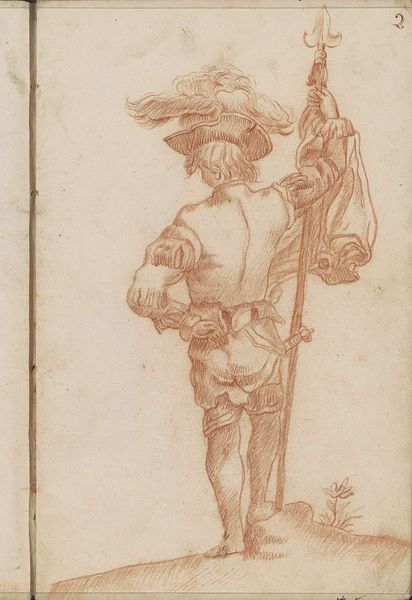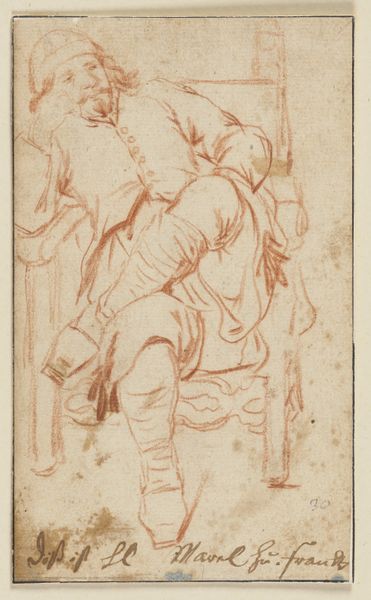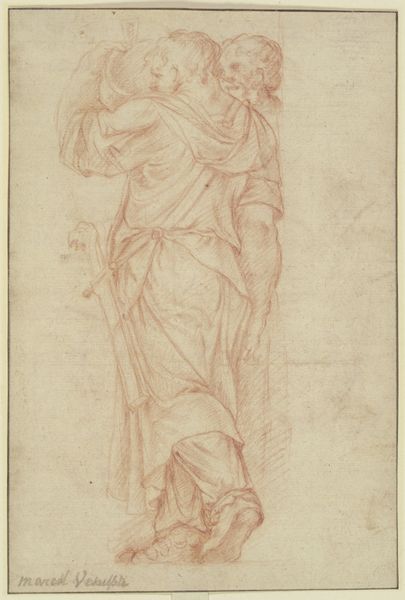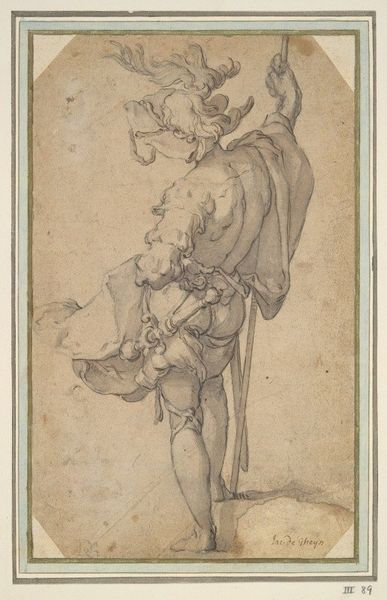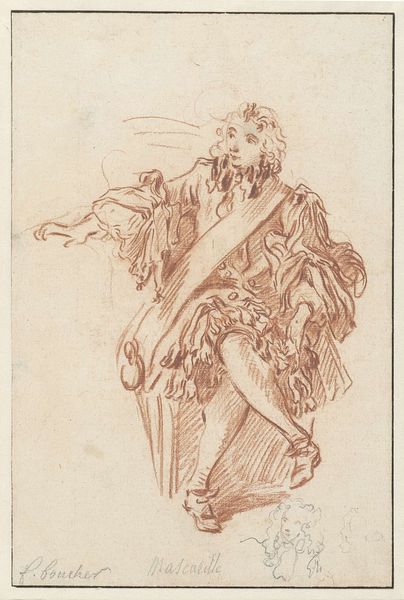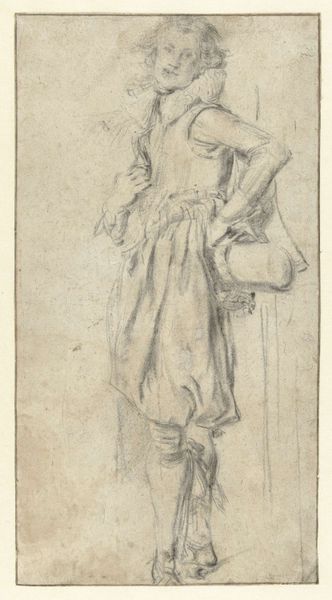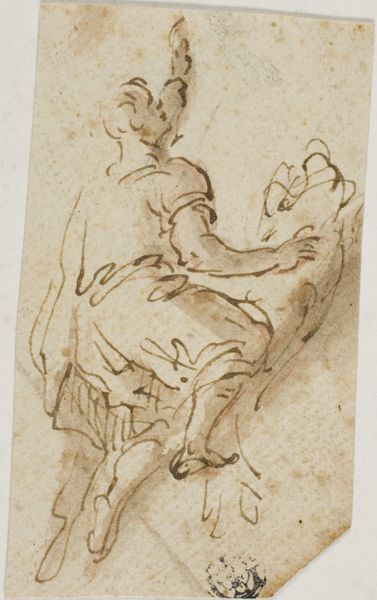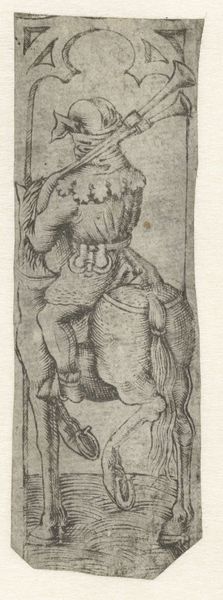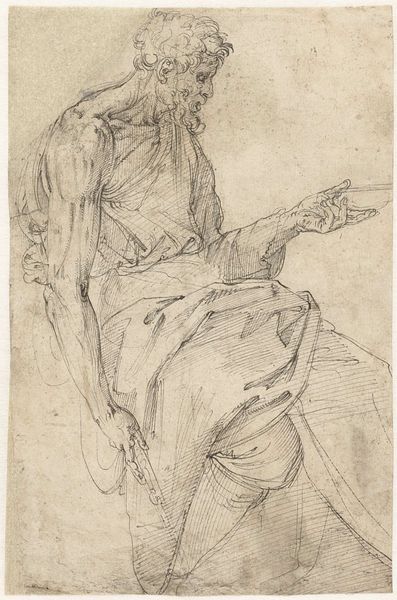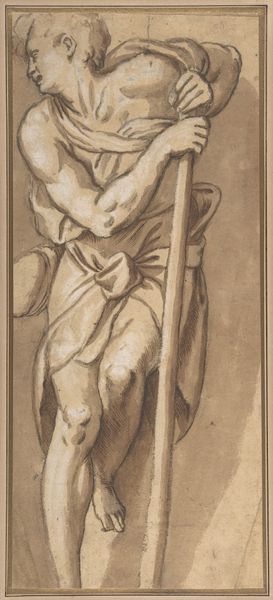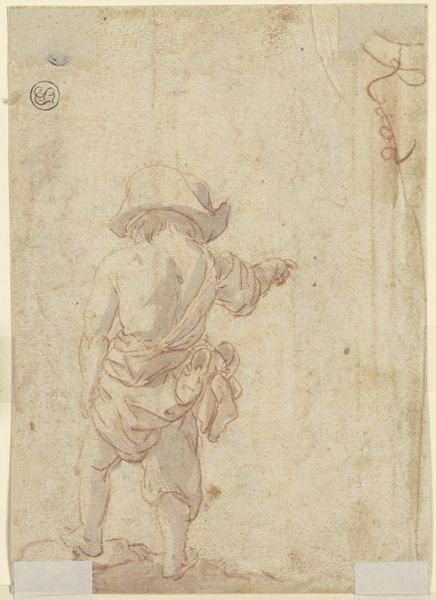
drawing, red-chalk, paper, dry-media
#
drawing
#
medieval
#
red-chalk
#
pencil sketch
#
figuration
#
paper
#
11_renaissance
#
dry-media
#
academic-art
Dimensions: height 234 mm, width 147 mm
Copyright: Rijks Museum: Open Domain
This drawing of a crossbowman, made in the late 16th century by an anonymous artist, is rendered in a reddish chalk known as sanguine. Notice the way that the artist has used the chalk to define form and texture. The crossbowman's body is built up with layers of hatching, giving a sense of weight and volume to his muscular frame. Sanguine was prized by Renaissance artists for its ability to mimic the tones of human flesh, and for its ease of blending. The choice of this material is significant: it reflects a renewed interest in the close observation of nature, and the use of drawing as a primary means of artistic expression. Here, the artist showcases his mastery of line and shading to bring the figure to life on the page, emphasizing the connection between the artist’s hand, the material, and the final image. Appreciating the skill and labor involved reminds us not to separate the concept of art from the means of its making.
Comments
No comments
Be the first to comment and join the conversation on the ultimate creative platform.
